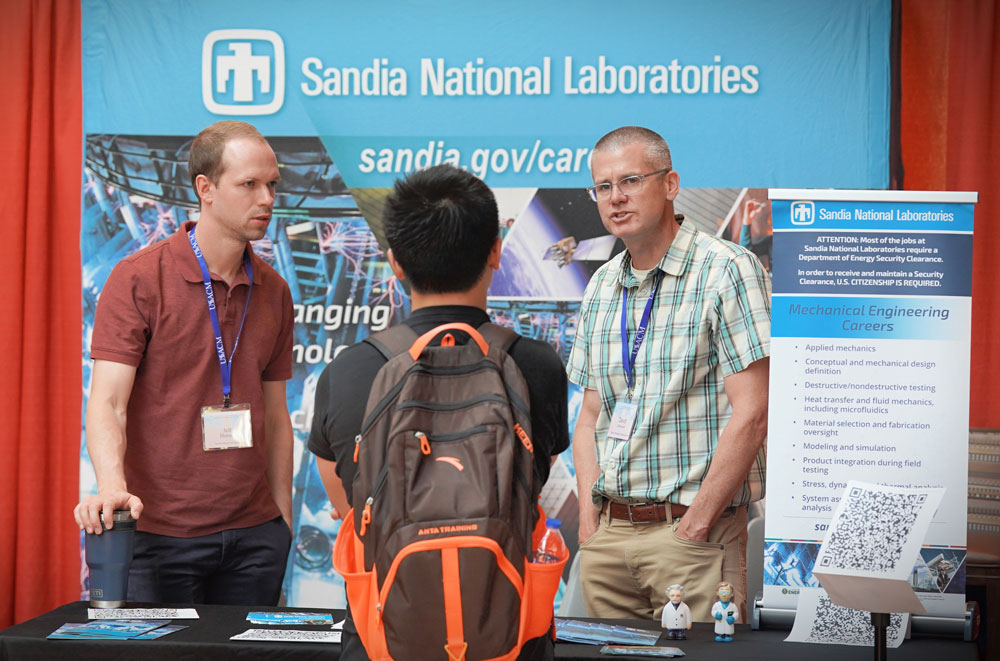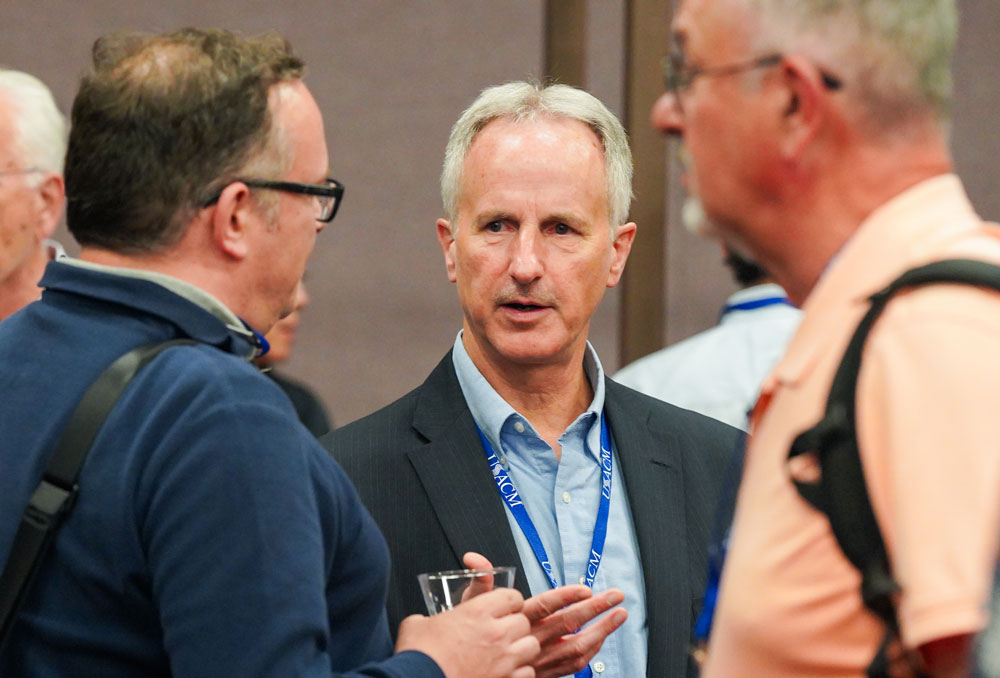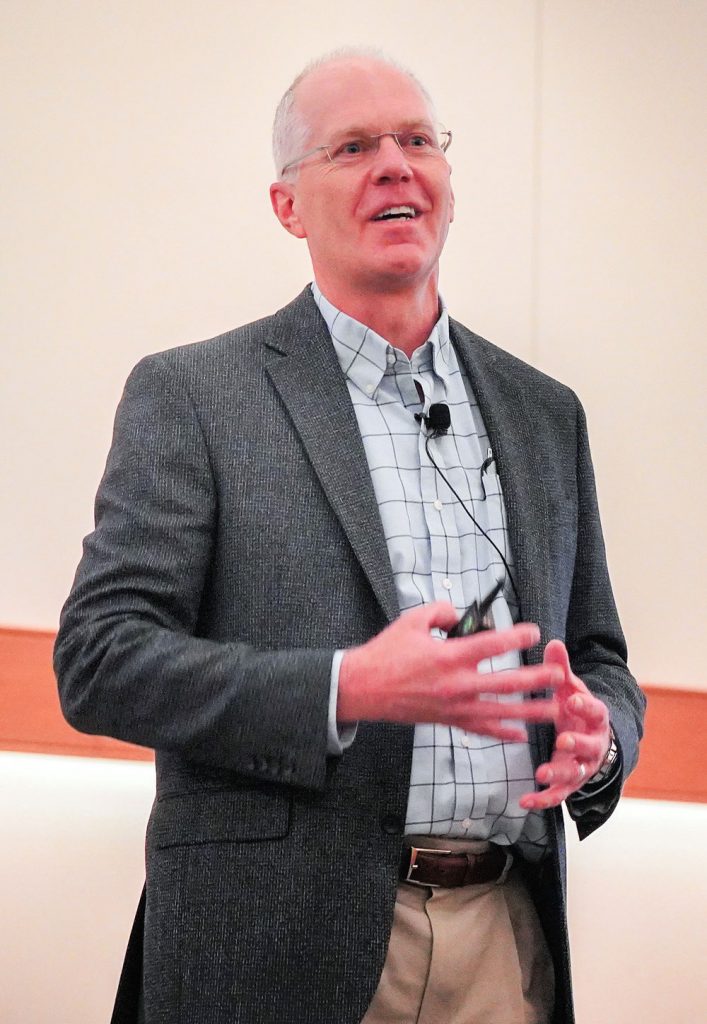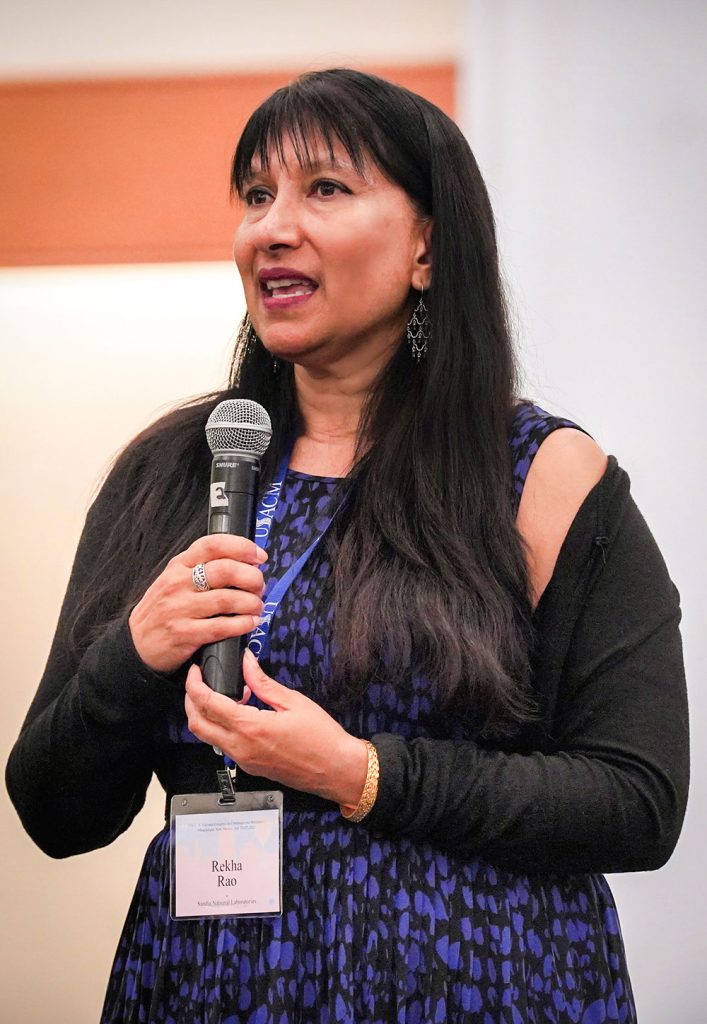Gathering promotes mentorship, diversity and recruiting

Ideally, researchers who attend scientific conferences experience the challenge of meeting colleagues both old and new to discuss the latest work in their field. That experience is quite different from organizing an entire conference and helping it roll along, with occasional prodding, from start to finish.
That’s what senior manager Jim Stewart and researcher Joe Bishop found when they successfully proposed to the U.S. Association of Computational Mechanics that its 2023 national congress, which attracted more than 1,200 attendees, be held in Albuquerque for the first time in two decades. They convinced Sandia researcher Rekha Rao, a vice president of the
organization who was slated to assume a higher position next year — the association’s first woman president — to serve as the technical program chair, while Jim and Joe assumed the roles of congress co-chairs.

(Photo courtesy of U.S. Association of Computational Mechanics)
“The technical talks were of very high quality and represented a wide variety of technical areas within the broad field of computational mechanics,” Jim said. “The congress was well-organized and well-run. No major issues arose that couldn’t be addressed, and we received very positive feedback from many attendees.”
Albuquerque Mayor Tim Keller provided pre-recorded welcome remarks and Associate Labs Director Doug Kothe delivered an in-person welcome for the congress, which took place in July.
One impressive achievement was the number of Sandia attendees doubled those at previous biannual conferences — 200 instead of the usual 100. Jim speculated that because the locally held conference significantly reduced expenses related to airfare, hotels and travel time, it made attendance possible for a larger number of area researchers.
“A locally held national conference is also a great recruiting opportunity,” Joe said, “and a medium for generating research ideas. It helps more Sandia researchers connect with professors working in compatible areas, identify promising students, and network.”
As program chair, Rekha designed and coordinated the overall conference program and scheduled 85 technical minisymposia— a complex undertaking.
“It’s unfunded work, carried out during nights and weekends,” she said. “Given the size of the conference, it’s a significant commitment.” However, it provided her with an opportunity to promote gender diversity, a key goal of the convention. “Half of the four plenary speakers were women, and two out of six semiplenary speakers were women.”


and association vice-president Rekha Rao addresses the 2023 national congress of the U.S. Association of Computational Mechanics. Next year, she will be the organization’s first woman president. (Photo courtesy of U.S. Association of Computational Mechanics)
“We’re also supporting the local community. The downtown hotels and restaurants were full,” she said, noting that food trucks also assisted local restaurants in serving 1,200 people in downtown Albuquerque.
Rekha coordinated many of the details for the meeting. “We assessed available rooms, facilitated mentoring, arranged for replacement speakers when necessary, organized student meetings and contests and recruited judges,” she said.
For Joe, the local conference held a personal significance: He was recruited 20 years ago, at the previous Albuquerque USNCCM7.
“I vividly remember attending the conference while I was working at General Motors. Seeing leaders in the field from all the national laboratories coming together was an electrifying experience; you could see the energy,” Joe said. The conference was led by former Sandia executive Tom Bickel, a former USACM president, who left a strong impression.
“I couldn’t help but think about how wonderful it would be to work at Sandia,” Joe said. So he applied, went through the interview process, and a year later, became a Sandian. “I was right,” he said.